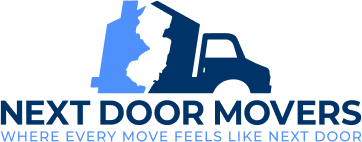
Moving a Box: Best Practices for Everyone
Do you sometimes struggle with moving a box without risking injury or damage? This post covers proper box techniques, selecting the right supplies, and organizing the process to make moving simple. Readers will learn how to lift safely, avoid common pitfalls, and use available tools to ease the work. The guidance offered helps solve issues like back pain and mismanaged boxes, ensuring a smoother moving experience for both residential and commercial needs.
Key Takeaways
- Proper box moving techniques improve safety and reduce physical strain during relocation
- Using organized packing supplies ensures secure transport of fragile items
- Maintaining proper posture and engaging leg muscles prevents injury when lifting heavy loads
- A detailed checklist and clear labels support efficient moves for residential and commercial clients
- Using dollies and secure straps makes handling heavy boxes safer and more efficient
Understand the Importance of Proper Box Moving Techniques

Proper box moving techniques reduce effort and improve safety. The discussion includes using a mobile app for planning, wardrobe boxes for easy organization, and moving truck rentals for reliable transport. It also covers avoiding common mistakes with bag handling and paper wrapping, ensuring a smooth, efficient move for everyone.
Recognize the Benefits of Efficient Moving Practices
Efficient moving practices benefit everyone by reducing physical strain and ensuring valuable items like electronics and kitchen gear remain secure during transit. Utilizing reliable moving supplies, such as uhaul boxes, streamlines the process of moving a box and minimizes potential damage during commercial and residential relocations:
| Task | Advantage |
|---|---|
| Packing | Ensures proper fit for kitchen items and electronics |
| Loading | Maintains stability when using uhaul boxes |
| Transport | Improves security with reliable moving supplies |
Identify Common Mistakes to Avoid When Moving Boxes
When moving boxes, common mistakes include improper handling of packing boxes and not using a tv moving box for fragile item protection, ignoring software to plan the move effectively, failing to check the availability of uhaul pods, and overlooking the reliability of moving trucks near me for a secure transport:
| Common Mistake | Recommended Practice |
|---|---|
| Using unsuitable packing boxes | Select boxes that fit specific items well |
| Neglecting planning tools | Utilize software for organized scheduling |
| Improper handling of electronics | Employ a dedicated tv moving box for safety |
| Overlooking transport options | Verify options like uhaul pods and moving trucks near me |
Mastering box handling clears the way for a smooth move. The next section shows which supplies make each step simpler.
Choose the Right Supplies for Moving Boxes Effectively

Efficient box moving begins with gathering essential packing materials, such as bubble wrap, and selecting the right box sizes for every item—from furniture to a mattress. Professionals rely on options like a penske moving truck and a moving truck rental near me for secure and organized transportation.
Gather Essential Packing Materials for Safe Transportation
Professional movers know that using the right packing materials, such as durable boxes, bubble wrap, packing tape, and labels, makes a noticeable difference in ensuring items arrive in optimal condition during any relocation effort:
| Packing Material | Purpose |
|---|---|
| Durable Boxes | Securing items and maintaining structure during movement |
| Bubble Wrap | Cushions fragile belongings to prevent damage |
| Packing Tape | Fastens boxes securely to eliminate accidental openings |
| Labels | Assists in organized sorting and tracking |
Select Appropriate Box Sizes for Different Items
Selecting the right box sizes ensures each item is packed securely while making the move more efficient and safe for everyone involved:
| Item Category | Recommended Box Size |
|---|---|
| Books and Small Electronics | Small boxes |
| Kitchenware and Fragile Items | Medium boxes |
| Large Appliances and Furniture Pieces | Large boxes |
The right supplies set the stage for a safer move. Now, learn how careful lifts keep your back safe and strong.
Master the Proper Lifting Techniques to Protect Your Back

Focus on lifting heavy boxes safely by using leg strength and maintaining proper posture. This section outlines how to engage leg muscles effectively while aligning the body to protect the back. The guidelines support best practices for moving a box during both commercial and residential relocations, ensuring a secure and efficient experience for everyone involved.
Use Your Legs to Lift and Carry Heavy Boxes Safely
Experts recommend engaging leg muscles when lifting heavy boxes, keeping the back aligned and reducing strain during moves. This technique proves effective for those handling residential and commercial moves across New Jersey, ensuring secure and efficient transport every time.
Maintain Proper Posture While Moving Boxes
Maintaining proper posture is vital during any move to lessen back strain and reduce injury risks. Experts advise keeping the back straight, bending at the knees instead of the waist, and positioning the weight close to the body to support safe and effective box handling:
- Align the spine by keeping shoulders straight and relaxed.
- Bend at the knees to use leg strength during lifts.
- Hold the box near the body to minimize strain.
- Avoid twisting motions that could injure the back.
Your back stays safe when lifting is done right. Now, plan each step to make the move count.
Organize Your Moving Process for Maximum Efficiency

A detailed moving checklist guides each step and keeps the process on track. Sorting and labeling boxes ensure that essentials are easy to find post-move. This organized approach streamlines tasks and supports efficient residential and commercial moves throughout New Jersey.
Create a Detailed Moving Checklist for Easy Navigation
A well-organized moving checklist is key to making each move seamless and stress-free. It clearly outlines critical tasks such as securing the right moving supplies, scheduling truck rentals, and planning logistics, helping both residential and commercial clients in towns like Jersey City and Newark complete their moves efficiently.
Sort and Label Boxes for Quick Access After Moving
Sorting and labeling boxes significantly improve the moving experience by enabling quick item retrieval and ensuring an organized layout for both residential and commercial moves in New Jersey; this method helps moving companies and clients alike reduce stress by clearly identifying each container’s contents:
- Group items by room or function
- Mark boxes with essential details
- Prioritize frequently used items for quick access
- Arrange boxes to support a seamless unpacking process
Organization lays the groundwork for a smooth move. Now, practical tools take center stage to lighten every load.
Utilize Tools and Equipment for Easier Box Handling

Using dollies and hand trucks eases box moving for a moving company serving both residential and commercial clients across New Jersey. Straps and ropes improve stability during transport. This section covers practical insights into these tools and equipment, ensuring efficient handling of heavy boxes for smoother relocations.
Explore the Benefits of Using Dollies and Hand Trucks
Using dollies and hand trucks reduces strain and boosts efficiency during commercial and residential moves across New Jersey. This equipment makes it easier for a moving company to handle heavy boxes safely while ensuring that clients in towns such as Jersey City, Newark, and surrounding areas experience a secure and streamlined relocation process.
Consider Straps and Ropes for Improved Stability When Moving
Using durable straps and ropes provides extra support when moving boxes, ensuring a secure and balanced lift for each load. Movers use these tools to minimize shifting during transport and protect valuable items during relocations:
- Secure boxes against unexpected movements
- Maintain balance during heavy lifts
- Reduce risks associated with sudden shifts
The equipment lightens the load, yet every move must be made with caution. Now safety steps in, guiding each careful shift of every heavy box.
Apply Safety Precautions While Moving Boxes Around

Effective safety practices are essential during a move. This section details the importance of wearing proper footwear to avoid injuries while also stressing the need for clear communication with helpers. Both measures play a crucial role in streamlining residential and commercial moves across New Jersey, ensuring a secure and efficient process.
Wear Appropriate Footwear to Prevent Injuries
A moving company serving both residential and commercial clients in New Jersey advises that wearing sturdy and properly fitting footwear is vital for preventing injuries. Safe footwear offers the necessary support during heavy lifts and quick movements, reducing the risks associated with slips and falls during relocations:
| Safety Measure | Benefit |
|---|---|
| Proper Footwear | Prevents slips and minimizes foot injuries |
| Secure Laces | Maintains stability and reduces tripping hazards |
Communicate With Helpers to Ensure a Smooth Moving Process
Clear and concise communication among helpers ensures that every step in the moving process is well-coordinated and safe; effective discussions help align team efforts and avoid any mix-ups during the relocation of boxes in both commercial and residential settings:
- Review tasks and assign clear roles
- Confirm the proper lifting techniques
- Establish signals for safe transport
- Verify the schedule and responsibilities
Conclusion
Moving boxes properly minimizes effort while improving safety and organization. Employing the right equipment and precise techniques reduces physical strain and lowers the risk of injuries. Organizing tasks and securing boxes with proper labeling help ensure that valuable items remain undamaged. These practices lay the groundwork for efficient and secure moves for both residential and commercial clients across New Jersey.
